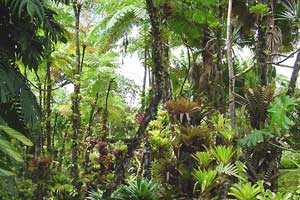 Tropical trees evolve twice as fast as their temperate relatives. This may explain why tropical regions boast a significantly higher number of species than other areas.
Tropical trees evolve twice as fast as their temperate relatives. This may explain why tropical regions boast a significantly higher number of species than other areas.
A study from New Zealand measured the rate of DNA change over millions of years in 45 pairs of closely related tree species.
“For each pair, we used two species that are closely related, one from the tropical region and one from the temperate region,” said Dr. Len Gillman, a co-author of the study from Auckland University of Technology.
The research compared species such as coniferous trees, kauri pines, and acacias in tropical regions of Australia, Papua New Guinea, and the Amazon with their relatives in temperate regions of countries like New Zealand, the United States, and Tasmania, Australia.
By comparing a specific segment of DNA in each pair and with their common ancestors, the research team was able to calculate the rate of evolutionary change.
“We found that the number of changes in tropical species is twice as high,” Gillman stated. “If you have an evolutionary rate that is double, it means you have more than twice the opportunity to arise and accumulate new species.”
The research team speculated that the faster evolutionary rate in tropical plants is due to quicker growth and metabolism. A faster metabolism leads to more frequent cell division and increases the chances of mutation.
T. An

















































